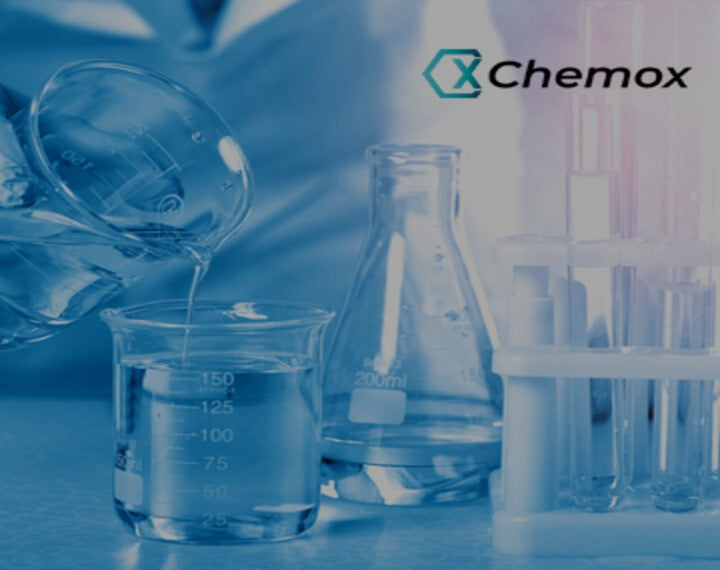Chemox Sulfamic Acid (Sulphamic Acid) 100% - 4Kg Chemox Sulfamic Acid (Sulphamic Acid) 100% - 4Kg
Sulfamic Acid:
Sulfamic acid is a unique strong inorganic acid. It is a Versatile acid used for cleaning metal and ceramic parts and surfaces. It especially used in cleaning Lime, scales & Rust from boiler parts, heat exchangers, cooling towers and cooling systems.
Uses of Sulfamic Acid
As sulfamic acid is super-efficient agent for descaling, it is used for cleaning a number of domestic appliances and industrial equipment. It is used for cleaning heat exchangers, boilers, condensers, descaling toilets, jackets and coils, efflorescence other deposits of mineral deposits, removing excess grout on tiles, etc. It helps remove protein deposits, hard water scale, beer and milk stone, copper corrosion, and light rust. Some other uses of sulfamic acids are listed below.
• Descaler, rust remover, and cleaner.
• Descaler and cleaner for dairy equipment such as milk evaporators, milkers’ pipeline.
• Descaler and cleaner for brewery equipment such as vats, pipelines, etc.
• Catalyst for esterification process.
• Used in dye & pigment manufacturing
• Used as an herbicide.
• Effective against foot and mouth.
• Used as an ingredient in denture tablets.
• Ingredient in fire extinguishing media.
• Urea-formaldehyde resins coagulator
• Synthesis of nitrous oxide by reaction with nitric acid.
• Chloride stabilizer in pulp & paper industry.
Sulfamic Acid as a Cleaning Agent
As per Research Dive analyst review, sulfamic acid is used as an acidic cleaning agent, usually for ceramics and metals. Over the last few years sulfamic acid has replaced hydrochloric acid as a remover of the rust. In homes, it is frequently found as a descaling agent in toilet cleaners, and detergents for the removing the lime scale. When compared to other strong and most common strong mineral acids, the sulfamic acid has the needed low toxicity, low volatility, and water descaling properties. It forms water-soluble salts of ferric iron and calcium.
Sulfamic acid provides intrinsic safety and hence it is preferred over hydrochloric acid for household use. Unlike the most common acids, the sulfamic acid does not form chlorine gas if invalidly mixed with hypochlorite based products.
Industrial Applications of Sulfamic Acid
The sulfamates have been used in the design of various types of therapeutic agents such as nucleotide/nucleoside HIV, antibiotics, HIV protease inhibitors (PIs), weight loss drugs, antiepileptic drugs, and anticancer drugs. Sulfamic acid is also used as a chlorine stabilizer in cooling towers and swimming pools. The industrial applications of sulfamic acid are as follows:
Paper & pulp Industry
Sulfamic Acid inhibits pulp degradation due to temperature at the hydrochloride and chlorination stage. It allows bleaching at elevated temperature and lower pH without any loss in strength.
Dyes & Pigments Industry
Sulfamic acid takes out excess of nitrides that are used in the diazotization reactions during the manufacturing of pigments and dye stuffs. The sulfamic acid can also remove nitrides if present in process water of emissions.
Sulfamic Acid:
Sulfamic acid is a unique strong inorganic acid. It is a Versatile acid used for cleaning metal and ceramic parts and surfaces. It especially used in cleaning Lime, scales & Rust from boiler parts, heat exchangers, cooling towers and cooling systems.
Uses of Sulfamic Acid
As sulfamic acid is super-efficient agent for descaling, it is used for cleaning a number of domestic appliances and industrial equipment. It is used for cleaning heat exchangers, boilers, condensers, descaling toilets, jackets and coils, efflorescence other deposits of mineral deposits, removing excess grout on tiles, etc. It helps remove protein deposits, hard water scale, beer and milk stone, copper corrosion, and light rust. Some other uses of sulfamic acids are listed below.
• Descaler, rust remover, and cleaner.
• Descaler and cleaner for dairy equipment such as milk evaporators, milkers’ pipeline.
• Descaler and cleaner for brewery equipment such as vats, pipelines, etc.
• Catalyst for esterification process.
• Used in dye & pigment manufacturing
• Used as an herbicide.
• Effective against foot and mouth.
• Used as an ingredient in denture tablets.
• Ingredient in fire extinguishing media.
• Urea-formaldehyde resins coagulator
• Synthesis of nitrous oxide by reaction with nitric acid.
• Chloride stabilizer in pulp & paper industry.
Sulfamic Acid as a Cleaning Agent
As per Research Dive analyst review, sulfamic acid is used as an acidic cleaning agent, usually for ceramics and metals. Over the last few years sulfamic acid has replaced hydrochloric acid as a remover of the rust. In homes, it is frequently found as a descaling agent in toilet cleaners, and detergents for the removing the lime scale. When compared to other strong and most common strong mineral acids, the sulfamic acid has the needed low toxicity, low volatility, and water descaling properties. It forms water-soluble salts of ferric iron and calcium.
Sulfamic acid provides intrinsic safety and hence it is preferred over hydrochloric acid for household use. Unlike the most common acids, the sulfamic acid does not form chlorine gas if invalidly mixed with hypochlorite based products.
Industrial Applications of Sulfamic Acid
The sulfamates have been used in the design of various types of therapeutic agents such as nucleotide/nucleoside HIV, antibiotics, HIV protease inhibitors (PIs), weight loss drugs, antiepileptic drugs, and anticancer drugs. Sulfamic acid is also used as a chlorine stabilizer in cooling towers and swimming pools. The industrial applications of sulfamic acid are as follows:
Paper & pulp Industry
Sulfamic Acid inhibits pulp degradation due to temperature at the hydrochloride and chlorination stage. It allows bleaching at elevated temperature and lower pH without any loss in strength.
Dyes & Pigments Industry
Sulfamic acid takes out excess of nitrides that are used in the diazotization reactions during the manufacturing of pigments and dye stuffs. The sulfamic acid can also remove nitrides if present in process water of emissions.






